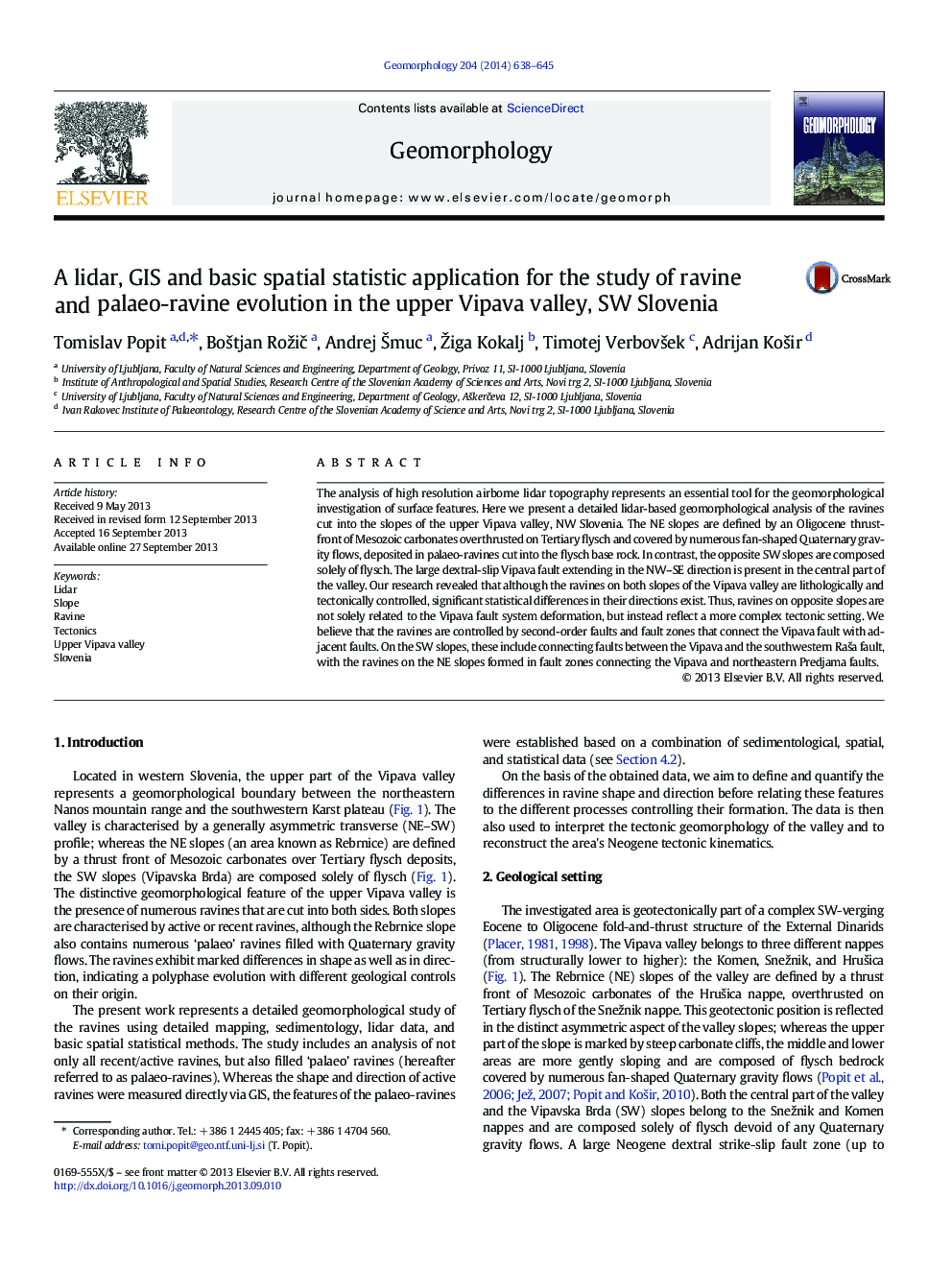| کد مقاله | کد نشریه | سال انتشار | مقاله انگلیسی | نسخه تمام متن |
|---|---|---|---|---|
| 6432805 | 1635445 | 2014 | 8 صفحه PDF | دانلود رایگان |

- Lidar is an essential tool for estimated ravines in different lithological basis.
- The fractured zones functioned as a narrow channel and direct debris-flow path.
- Ravines in the Upper Vipava valley controlled by second-order faults
The analysis of high resolution airborne lidar topography represents an essential tool for the geomorphological investigation of surface features. Here we present a detailed lidar-based geomorphological analysis of the ravines cut into the slopes of the upper Vipava valley, NW Slovenia. The NE slopes are defined by an Oligocene thrust-front of Mesozoic carbonates overthrusted on Tertiary flysch and covered by numerous fan-shaped Quaternary gravity flows, deposited in palaeo-ravines cut into the flysch base rock. In contrast, the opposite SW slopes are composed solely of flysch. The large dextral-slip Vipava fault extending in the NW-SE direction is present in the central part of the valley. Our research revealed that although the ravines on both slopes of the Vipava valley are lithologically and tectonically controlled, significant statistical differences in their directions exist. Thus, ravines on opposite slopes are not solely related to the Vipava fault system deformation, but instead reflect a more complex tectonic setting. We believe that the ravines are controlled by second-order faults and fault zones that connect the Vipava fault with adjacent faults. On the SW slopes, these include connecting faults between the Vipava and the southwestern Raša fault, with the ravines on the NE slopes formed in fault zones connecting the Vipava and northeastern Predjama faults.
Journal: Geomorphology - Volume 204, 1 January 2014, Pages 638-645